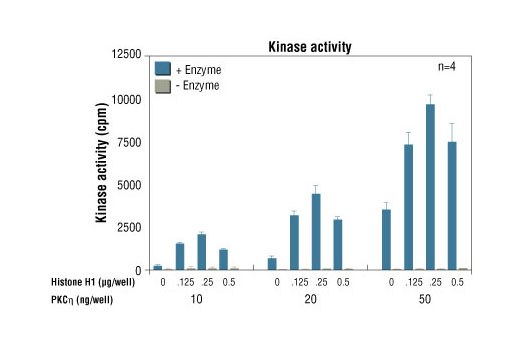
Figure 1. PKCeta kinase activity was measured in a radiometric assay using the following reaction conditions: 60 mM HEPES-NaOH, pH 7.5, 3 mM MgCl2, 3 mM MnCl2, 3 µM Na-orthovanadate, 1.2 mM DTT, 1 µM ATP, 2.5 µg/50 µl PEG20,000, Substrate: Histone H1, variable and Recombinant PKCeta, variable.

Figure 3. Dose dependence curve of PKCeta kinase activity: DELFIA® data generated using Phospho-PKA Substrate (RRXS/T) (100G7) Rabbit mAb #9624 to detect phosphorylation of substrate peptide (#1331) by PKCeta kinase. In a 50 µl reaction, increasing amounts of PKCeta and 1.5 µM substrate peptide were used per reaction at room temperature for 30 minutes. (DELFIA® is a registered trademark of PerkinElmer, Inc.)

Figure 5. Staurosporine inhibition of PKCeta kinase activity: DELFIA® data generated using Phospho-PKA Substrate (RRXS/T) (100G7) Rabbit mAb #9624 to detect phosphorylation of PKCeta substrate peptide (#1331) by PKCeta kinase. In a 50 µl reaction, 10 ng PKCeta, 1.5 µM substrate peptide, 20 µM ATP and increasing amounts of staurosporine were used per reaction at room temperature for 30 minutes. (DELFIA® is a registered trademark of PerkinElmer, Inc.)

Figure 4. Peptide concentration dependence of PKCeta kinase activity: DELFIA® data generated using Phospho-PKA Substrate (RRXS/T) (100G7) Rabbit mAb #9624 to detect phosphorylation of substrate peptide (#1331) by PKCeta kinase. In a 10 µl reaction, 50 ng of PKCeta and increasing concentrations of substrate peptide were used per reaction at room temperature for 30 minutes. (DELFIA® is a registered trademark of PerkinElmer, Inc.)

Figure 2. Time course of PKCeta kinase activity: DELFIA® data generated using Phospho-PKA Substrate (RRXS/T) (100G7) Rabbit mAb #9624 to detect phosphorylation of PKCeta substrate peptide (#1331) by PKCeta kinase. In a 50 µl reaction, 10 ng PKCeta and 1.5 uM substrate peptide were used per reaction. (DELFIA® is a registered trademark of PerkinElmer, Inc.)




